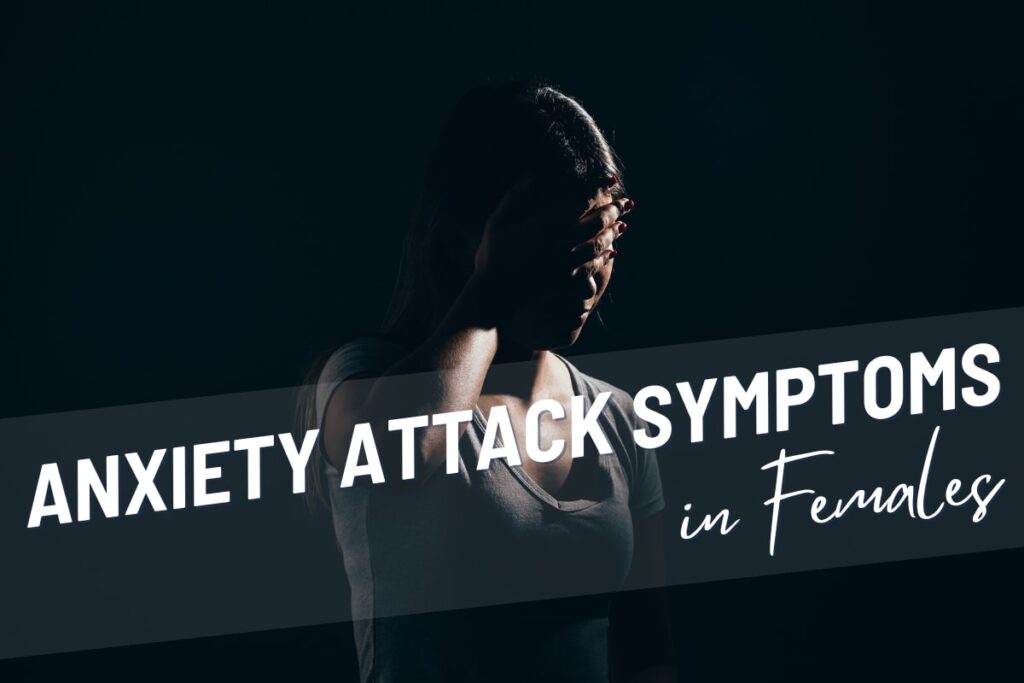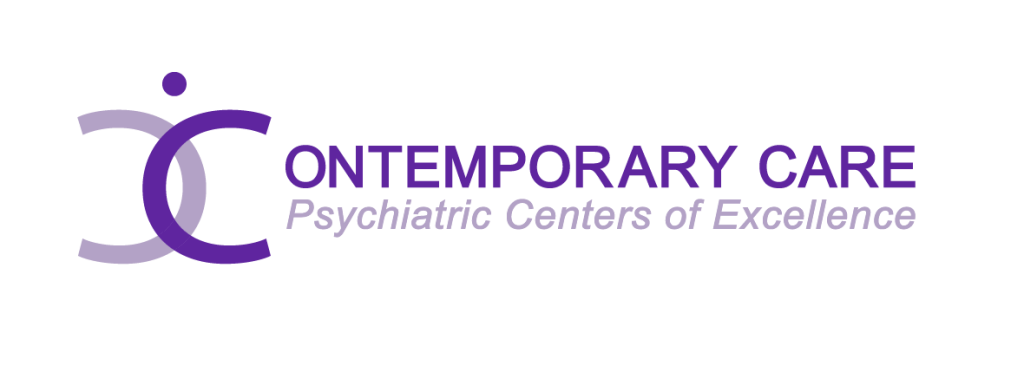Anxiety attacks, also known as panic attacks, can be a frightening experience, especially for women who might experience unique symptoms due to hormonal differences and social pressures. Understanding the signs and knowing how to manage them can make a significant difference in dealing with anxiety effectively. In this comprehensive guide, we’ll explore the anxiety attack symptoms in females and their treatment options, especially in Connecticut, and provide valuable insights to help you or your loved ones cope better.
What Is an Anxiety Attack?
An anxiety attack is a sudden episode of fear or discomfort that peaks within minutes. It can be triggered by stress, trauma, or even certain health conditions. Though both men and women can have anxiety attacks, these are more common in the case of females due to their various hormonal fluctuations, societal obligations, pressures owing to gender-specific factors, etc.
Anxiety Attack Symptoms in Females
Understanding the symptoms of anxiety attacks in females is crucial for timely intervention and treatment.
- Rapid Heartbeat
- Anxiety attack symptoms in females often include a racing heart rate. This sudden increase in the heart rate can be terrifying for the sufferer, who may believe she is having a heart attack.
- Shortness of Breath
- Women with an anxiety attack usually have shortness of breath, a suffocating feeling. It can in fact cause hyperventilation that only makes the situation worse.
- Chest Pain
- Anxiety attack symptoms in females can include chest pain, which adds to the fear of having a heart attack. However, this pain is usually not related to any cardiac issues.
- Dizziness or Lightheadedness
- Feeling dizzy or lightheaded is another common symptom. This can be due to hyperventilation or the body’s response to stress.
- Sweating and Hot Flashes
- Women may experience excessive sweating or sudden hot flashes during an anxiety attack. These symptoms can be very uncomfortable and add to the overall feeling of panic.
- Nausea or Stomach Pain
- Anxiety attacks can cause gastrointestinal issues, including nausea, stomach pain, or even vomiting. These symptoms are often linked to the body’s fight-or-flight response.
- Trembling or Shaking
- Uncontrollable shaking is another common symptom of a panic attack, which leaves many women feeling like they are not in control of their body anymore.
- Feeling of Detachment or Unreality
- Many women feel detached from reality or disconnected from their surroundings, which can be particularly unsettling.
- Fear of Losing Control or Dying
- A pervasive fear of losing control or even dying is a hallmark of anxiety attacks. This intense fear can make the symptoms feel even more overwhelming.
- Numbness or Tingling Sensations
- Numbness and tingling sensations, especially in the extremities, are also possible anxiety attack symptoms in females.
Anxiety Attack Symptoms Female Treatment in Connecticut
If you’re in Connecticut and struggling with anxiety attacks, there are several treatment options available:
- Therapy and Counseling
- Cognitive-behavioral therapy can help significantly with anxiety attacks. Connecticut therapists for women who are seeking help in understanding and managing symptoms.
- Medication
- Over time, Connecticut healthcare providers may also prescribe certain anti-anxiety medications like benzodiazepines or antidepressants to help you manage the symptoms.
- Support Groups
- Joining support groups can provide a sense of community and understanding. Many organizations in Connecticut offer support groups specifically for women dealing with anxiety.
- Lifestyle Changes
- Incorporating lifestyle changes such as regular exercise, healthy eating, and mindfulness practices can significantly reduce anxiety attack symptoms in females.
- Alternative Therapies
- Techniques like yoga, acupuncture, and meditation have shown promise in managing anxiety symptoms. Connecticut offers various practitioners specializing in these holistic approaches.
Recognizing the Early Warning Signs
Identifying the early warning signs of an anxiety attack can help in managing and possibly preventing the full-blown attack. Typical early signs include:
- Increased Heart Rate: Noticeable faster heartbeat without physical exertion.
- Restlessness: An inability to sit still or relax.
- Muscle Tension: Tightness in muscles, especially in the neck and shoulders.
- Sense of Dread: An overwhelming feeling that something terrible will happen.
By recognizing these signs early, individuals can employ coping strategies to mitigate the onset of a full anxiety attack.
The Impact of Anxiety on Daily Life
Anxiety can significantly affect a woman’s daily life, interfering with work, relationships, and overall well-being. Chronic anxiety can lead to:
- Avoidance Behaviors: Avoiding places or situations that trigger anxiety.
- Reduced Productivity: Difficulty concentrating and completing tasks.
- Relationship Strain: Increased irritability and mood swings affecting personal relationships.
- Physical Health Issues: Chronic stress leads to conditions such as hypertension and gastrointestinal problems.
Understanding this impact is crucial for seeking timely treatment and support.
Differences Between Anxiety Attacks and Panic Attacks
While often used interchangeably, anxiety attacks and panic attacks are different. Key differences include:
- Onset:
- Anxiety Attacks: Build gradually in response to stressors.
- Panic Attacks: Sudden onset without obvious triggers.
- Duration:
- Anxiety Attacks: These can last for prolonged periods, from hours to days.
- Panic Attacks: Typically peak within 10 minutes and subside within 30 minutes.
- Symptoms:
- Anxiety Attacks: Mild to severe symptoms related to ongoing stress.
- Panic Attacks: Intense physical symptoms like heart palpitations and shortness of breath.
Recognizing these differences can aid in understanding and managing each condition effectively.
The Role of Genetics in Anxiety Disorders
Genetics plays a role in the predisposition to anxiety disorders. Factors include:
- Family History: There is a higher likelihood of experiencing anxiety if close relatives have anxiety disorders.
- Genetic Markers: Specific genes that may influence neurotransmitter systems related to anxiety.
Understanding genetic factors can help in seeking appropriate preventative measures and treatments.
Common Triggers for Anxiety Attacks in Females
Identifying common triggers for anxiety attacks can help in managing and preventing them. These triggers include:
- Stress: Major life changes, work pressure, and personal relationships.
- Trauma: Past traumatic events or ongoing trauma.
- Hormonal Changes: Menstrual cycles, pregnancy, and menopause.
- Substances: Caffeine, alcohol, and certain medications.
Avoiding or managing these triggers can reduce the frequency and intensity of anxiety attacks.
How to Support a Loved One Experiencing an Anxiety Attack
Supporting a loved one during an anxiety attack involves:
- Remaining Calm: Your calmness can help them feel safer.
- Offering Reassurance: Gently remind them that the attack will pass, and they are safe.
- Breathing Together: Guide them to breathe slowly and deeply.
- Avoiding Dismissal: Validate their feelings and avoid saying things like “just calm down.”
Educating yourself about anxiety can also enhance your ability to offer practical support.
When to Seek Professional Help
It’s crucial to seek professional help when anxiety attacks become frequent, severe, or interfere with daily life. Indicators include:
- Inability to Function: Struggling to perform daily tasks.
- Physical Symptoms: Experiencing severe physical symptoms like chest pain.
- Persistent Fear: Constant fear or worry that doesn’t go away.
- Avoidance: Avoiding situations due to fear of having an anxiety attack.
In Connecticut, numerous resources are available for women seeking help for anxiety.
Breathing Techniques to Calm an Anxiety Attack
Breathing techniques can be highly effective in calming an anxiety attack. Some practical methods include:
- Diaphragmatic Breathing:
- Breathe deeply into the abdomen, not just the chest.
- Inhale for 4 seconds, hold, exhale for 4 seconds.
- Box Breathing:
- Inhale for 4 seconds, hold, exhale, hold.
- 4-7-8 Method:
- Inhale for 4 seconds, hold for 7 seconds, exhale for 8 seconds.
Practicing these techniques regularly can make them more effective during an attack.
Mindfulness and Meditation Practices
Mindfulness and meditation can significantly reduce anxiety by promoting relaxation and increasing self-awareness. Effective practices include:
- Guided Meditation: Follow audio or video guides to focus your mind and relax.
- Mindfulness-Based Stress Reduction (MBSR): A structured program that teaches mindfulness to manage stress and anxiety.
- Mindful Breathing: Focus on your breath to bring attention to the present moment and calm the mind.
These practices can help manage anxiety symptoms and prevent attacks.
Exercise and Its Benefits for Anxiety
Regular exercise is one of the most effective ways to manage anxiety. Benefits include:
- Endorphin Release: Physical activity releases endorphins, which are natural mood lifters.
- Stress Reduction: Exercise reduces levels of stress hormones like cortisol.
- Improved Sleep: Regular activity can enhance sleep quality, reducing anxiety.
Walking, running, yoga, and swimming are particularly beneficial.
The Importance of Sleep in Managing Anxiety
Adequate sleep is essential for managing anxiety. Poor sleep can exacerbate anxiety symptoms and trigger attacks. To improve sleep:
- Establish a Routine: Go to bed and wake up simultaneously every day.
- Create a Restful Environment: Ensure your bedroom is dark, quiet, and calm.
- Limit Screen Time: Avoid screens at least an hour before bed.
- Practice Relaxation: Engage in calming activities like reading or warm baths before bed.
These practices can improve sleep quality and reduce anxiety.
Self-Care Strategies for Women
Self-care is crucial for managing anxiety. Effective strategies include:
- Setting Boundaries: Learn to say no and prioritize your well-being.
- Practicing Relaxation Techniques: Engage in activities that relax you, such as bathing, reading, or listening to music.
- Engaging in Hobbies: Spend time doing things you enjoy, distracting your mind and lift your mood.
- Maintaining a Healthy Work-Life Balance: Ensure you have time for relaxation and personal activities outside of work.
Incorporating these strategies into your routine can help reduce stress and prevent anxiety attacks.
Creating a Supportive Environment
Creating a supportive environment involves surrounding yourself with understanding and empathetic individuals. Support can come from:
- Family: Open communication with family members about your needs and struggles.
- Friends: Building a network of friends who understand and support you.
- Support Groups: Joining groups where you can share experiences and receive support from others facing similar challenges.
- Mental Health Professionals: Regular sessions with a therapist or counselor who specializes in anxiety.
A supportive environment can provide comfort and reduce anxiety.
Emergency Measures: What to Do During an Anxiety Attack
During an anxiety attack, it’s important to focus on calming techniques. Here are some immediate steps:
- Deep Breathing: Practice deep breathing exercises to slow your heart rate.
- Grounding Techniques: Use grounding techniques, such as focusing on physical sensations or naming objects around you, to bring yourself back to the present moment.
- Positive Affirmations: Repeat calming phrases like “I am safe” or “This will pass” to reassure yourself.
- Seeking Help: If the attack is severe, do not hesitate to seek help from a trusted person or call emergency services.
Having a plan in place and knowing who to contact for support can also help manage the situation more effectively.
The Connection Between Anxiety and Other Mental Health Issues
Anxiety often coexists with other mental health issues, such as:
- Depression: Persistent sadness or loss of interest in activities.
- PTSD: Post-traumatic stress disorder following traumatic events.
- OCD: Obsessive-compulsive disorder, characterized by repetitive thoughts and behaviors.
- Substance Abuse: Using drugs or alcohol to cope with anxiety.
Understanding this connection can help in seeking comprehensive treatment and improving overall mental health.
Managing Anxiety in the Workplace
Managing anxiety in the workplace involves:
- Setting Realistic Goals: Break tasks into manageable steps and set achievable goals.
- Taking Regular Breaks: Short breaks throughout the day can help reduce stress.
- Practicing Stress Management Techniques: Techniques like deep breathing, stretching, or walking can be helpful.
- Seeking Support: Talk to supervisors or HR about your needs and look for support from colleagues.
Creating a balanced work environment can reduce anxiety and improve productivity.
How Technology Can Help Manage Anxiety
Technology can provide valuable tools for managing anxiety, including:
- Mindfulness Apps: Apps like Headspace or Calm offer guided meditations and relaxation exercises.
- Therapy Platforms: Online therapy platforms provide access to professional help.
- Tracking Tools: Apps that track your mood, sleep, and triggers can provide insights and help manage symptoms.
These tools can offer support and resources at your fingertips.
Success Stories: Women Who Overcame Anxiety
Hearing success stories from women who have successfully managed their anxiety can provide inspiration and hope. Examples include:
- Personal Accounts: Women sharing their journeys and the strategies that helped them.
- Practical Tips: Insights and tips from those who have found effective ways to manage anxiety.
- Encouragement: Reassurance that recovery is possible and that you are not alone.
These stories can offer practical tips, encouragement, and the reassurance that recovery is possible.
Resources and Helplines in Connecticut
Connecticut offers various resources and helplines for women dealing with anxiety, including:
- Anxiety and Depression Association of America (ADAA): Provides information and resources for those struggling with anxiety.
- Connecticut Mental Health Services: Local services that offer counseling, therapy, and support groups.
- Helplines: 24/7 helplines like the National Suicide Prevention Lifeline (1-800-273-8255) and Connecticut’s crisis services.
These organizations can provide support, information, and treatment options.
Future Trends in Anxiety Treatment
Future trends in anxiety treatment include advancements in:
- Teletherapy: Increasing access to therapy through online platforms.
- Personalized Medicine: Tailoring treatments based on individual genetic profiles and specific needs.
- Integration of Technology: Using virtual reality, AI, and other technologies to enhance treatment.
Staying informed about these trends can help women access the most effective and innovative treatments available.

Take Control of Your Anxiety with Contemporary Care Centers!
At Contemporary Care Centers, we understand the unique challenges that anxiety can pose for women. Our team of well-trained and compassionate offers personalized care around your schedule. Whether you are suffering from anxiety attack symptoms in females or in search of full anxiety disorder treatments in Connecticut, we will work with you to reduce and manage your anxieties. Don’t let anxiety hold you back any longer. Contact Contemporary Care Centers today to schedule a consultation and start your journey towards better mental health. Exactly, because your welfare is our first concern. Contact us now and take the first step towards a brighter, anxiety-free future.




